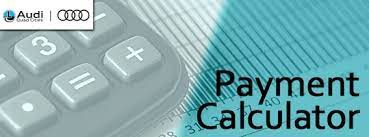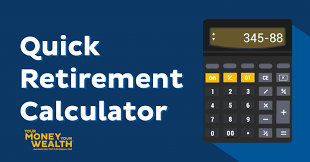Welcome to our comprehensive financial resource featuring the Loan Payments Calculator, also known as the Loan Calculator Payment or simply Loan Calc. We offer a versatile tool to help you navigate your loan payments with ease, providing accurate and convenient calculations for various loan types. Whether you’re planning a mortgage, car loan, or personal loan, our calculator is your go-to solution for managing your financial obligations efficiently.
Payment Calculator
Amortization Schedule
| Year | Balance | Payment | Principal | Interest | New Balance |
|---|
What is Loan Fixed Term?
The fixed term of a loan refers to the period of time during which the borrower is required to make regular payments to the lender. During this time, the interest rate and payment amount remain fixed and do not change. Fixed term loans are often contrasted with variable rate loans, which have interest rates that fluctuate over time.
The length of the fixed term can vary depending on the type of loan, the lender’s policies, and the borrower’s creditworthiness. For example, a personal loan might have a fixed term of three to five years, while a mortgage might have a fixed term of 15 or 30 years.
Advantages and Disadvantages of Loan Fixed Term
One of the main advantages of a fixed term loan is that it provides stability and predictability. Since the interest rate and payment amount remain fixed throughout the term of the loan, borrowers can plan their budget accordingly and avoid surprises.
However, there are also some potential drawbacks to consider. Fixed term loans often have higher interest rates than variable rate loans, which means that borrowers may end up paying more over the life of the loan. Additionally, fixed term loans are often less flexible than variable rate loans, meaning that borrowers may not be able to change the payment schedule or terms of the loan without incurring fees or penalties.
How Loan Fixed Term Affects Loan Repayments
The fixed term of a loan can have a significant impact on the borrower’s monthly payments and overall interest costs. Generally speaking, the longer the fixed term, the lower the monthly payment will be, but the more interest the borrower will pay over the life of the loan.
For example, consider a $10,000 loan with an interest rate of 5%. If the loan has a fixed term of three years, the borrower will pay $299 per month and a total of $10,756 over the life of the loan. If the loan has a fixed term of five years, the borrower will pay $188 per month and a total of $11,280 over the life of the loan.
How to Choose the Right Loan Fixed Term
Choosing the right fixed term for a loan depends on a variety of factors, including the borrower’s income, expenses, and overall financial goals. Generally speaking, shorter loan terms are preferable for borrowers who want to pay off their debt quickly and minimize interest costs. Longer loan terms may be more appropriate for borrowers who need lower monthly payments in order to manage their budget.
When choosing a fixed term for a loan, borrowers should also consider the loan’s interest rate, fees, and other terms and conditions. It’s important to shop around and compare offers from multiple lenders to find the best deal.
Loan fixed term is an important factor to consider when taking out a loan, and borrowers should understand its implications before signing on the dotted line. By considering the advantages and disadvantages of fixed term loans, as well as the impact on loan repayments, borrowers can make informed decisions about their financial future.
Fixed Monthly Payment Amount
What is Loan Fixed Monthly Payment Amount?
The fixed monthly payment amount of a loan refers to the regular amount the borrower is required to pay to the lender each month. This amount is determined by the loan principal, interest rate, and fixed term of the loan. A fixed monthly payment amount means that the borrower’s monthly payments will not change over the life of the loan, providing stability and predictability to the borrower’s budget.
Advantages and Disadvantages of Loan Fixed Monthly Payment Amount
One of the main advantages of a fixed monthly payment amount is that it provides stability and predictability. Since the payment amount remains fixed throughout the term of the loan, borrowers can plan their budget accordingly and avoid surprises.
However, there are also some potential drawbacks to consider. Fixed monthly payment amounts often have higher interest rates than variable payment loans, which means that borrowers may end up paying more over the life of the loan. Additionally, fixed payment loans are often less flexible than variable payment loans, meaning that borrowers may not be able to change the payment schedule or terms of the loan without incurring fees or penalties.
How Loan Fixed Monthly Payment Amount Affects Loan Repayments
The fixed monthly payment amount of a loan can have a significant impact on the borrower’s total interest costs and the length of the loan. Generally speaking, the higher the fixed monthly payment, the lower the interest costs will be over the life of the loan, but the shorter the loan term will be. Conversely, a lower fixed monthly payment will result in higher interest costs, but a longer loan term.
For example, consider a $10,000 loan with an interest rate of 5%. If the loan has a fixed monthly payment amount of $299, the borrower will pay a total of $10,756 over the life of the loan. However, if the borrower chooses a fixed monthly payment amount of $188, the total interest paid over the life of the loan will be $1,524 higher, and the loan term will be extended by 2 years.
How to Choose the Right Loan Fixed Monthly Payment Amount
Choosing the right fixed monthly payment amount for a loan depends on a variety of factors, including the borrower’s income, expenses, and overall financial goals. Generally speaking, higher monthly payments are preferable for borrowers who want to pay off their debt quickly and minimize interest costs. Lower monthly payments may be more appropriate for borrowers who need more flexibility in their budget.
When choosing a fixed monthly payment amount for a loan, borrowers should also consider the loan’s interest rate, fees, and other terms and conditions. It’s important to shop around and compare offers from multiple lenders to find the best deal.
Tips for Staying on Budget and Saving Money
Staying on budget and saving money while making fixed monthly payments on a loan can be challenging, but there are several strategies that can help. These include making extra payments whenever possible, negotiating with the lender for a lower interest rate or payment amount, and exploring other sources of funding, such as personal loans or lines of credit.
Understanding loan fixed monthly payment amount is an important factor to consider when taking out a loan, and borrowers should understand its implications before signing on the dotted line. By considering the advantages and disadvantages of fixed monthly payment loans, as well as the impact on loan repayments, borrowers can make informed decisions about their financial future.
Interest Rate (APR)
What is Loan Interest Rate (APR)?
Loan interest rate (APR) is the annual cost of borrowing money, expressed as a percentage of the loan amount. Unlike the nominal interest rate, which only includes the interest charged on the loan, the APR takes into account additional fees and charges associated with the loan, such as origination fees and closing costs. This provides borrowers with a more accurate representation of the true cost of borrowing money.
The APR is calculated using a standardized formula, which takes into account the loan principal, interest rate, and fees over the life of the loan. The higher the APR, the more expensive the loan will be over the life of the loan.
Advantages and Disadvantages of Loan Interest Rate (APR)
One of the main advantages of a low APR is that it can save borrowers money over the life of the loan. By reducing the amount of interest paid on the loan, borrowers can pay off their debt faster and with lower overall costs.
However, there are also some potential drawbacks to consider. Loans with low APRs may have higher fees or more stringent eligibility requirements, which can make it more difficult to qualify for the loan. Additionally, loans with low APRs may not be the best option for borrowers who need short-term financing or who have less-than-perfect credit scores.
How Loan Interest Rate (APR) Affects Loan Repayments
The interest rate (APR) can have a significant impact on the amount of interest paid over the life of the loan, as well as the borrower’s monthly payments. Generally speaking, the higher the interest rate, the higher the monthly payments will be, and the more interest the borrower will pay over the life of the loan.
For example, consider a $10,000 loan with an interest rate of 5%. If the loan has a term of three years, the borrower will pay a total of $10,756 over the life of the loan. However, if the interest rate increases to 10%, the total interest paid over the life of the loan will increase to $1,861, and the borrower will pay a total of $11,861 over the life of the loan.
How to Get the Best Deal on Loan Interest Rate (APR)
To get the best deal on loan interest rate (APR), borrowers should take several steps. First, it’s important to shop around and compare offers from multiple lenders. This will give borrowers a sense of the current market rates and help them identify the lenders with the most competitive rates and terms.
Second, borrowers should work to improve their credit score, as a higher credit score can often lead to lower interest rates. This can be done by paying bills on time, paying down debt, and disputing errors on their credit report.
Third, borrowers should negotiate with lenders to try to get better rates and terms. This can involve asking for a lower interest rate or negotiating fees and charges associated with the loan.
Tips for Managing Your Loan Interest Rate (APR)
To manage their loan interest rate (APR), borrowers should consider several strategies. First, they can make extra payments to pay off their loan faster and reduce the amount of interest paid over the life of the loan. Second, they can refinance their loan if interest rates have decreased since they first took out the loan. Finally, they can work with a financial advisor or credit counselor to develop a long-term plan for managing their debt.
Variable vs. Fixed
What is a Loan Variable?
A variable loan, also known as an adjustable-rate loan, is a type of loan where the interest rate can change over the life of the loan. This means that the borrower’s monthly payments can also change over time, based on changes in the index to which the interest rate is tied.
One of the benefits of variable loans is that they often start with lower interest rates than fixed loans. This can make them more attractive to borrowers who want to save money in the short term. Additionally, variable loans can offer more flexibility than fixed loans, as borrowers may be able to make extra payments or refinance their loans if interest rates change.
However, one of the main drawbacks of variable loans is that they carry more risk than fixed loans. Since the interest rate can change over time, borrowers may end up paying significantly more in interest costs over the life of the loan than they would with a fixed loan. Additionally, variable loans can be more difficult to budget for, as borrowers may not know exactly how much their payments will be from month to month.
What is a Loan Fixed?
A fixed loan, also known as a fixed-rate loan, is a type of loan where the interest rate remains the same over the life of the loan. This means that the borrower’s monthly payments will also remain the same throughout the life of the loan.
One of the main benefits of fixed loans is that they offer stability and predictability. Borrowers know exactly how much their monthly payments will be, which can make budgeting and financial planning easier. Additionally, fixed loans are generally less risky than variable loans, as borrowers don’t have to worry about interest rate fluctuations.
However, fixed loans often start with higher interest rates than variable loans. This means that borrowers may end up paying more in interest costs over the life of the loan than they would with a variable loan. Additionally, fixed loans may be less flexible than variable loans, as borrowers may not be able to make extra payments or refinance their loans without incurring fees or penalties.
Advantages and Disadvantages of Loan Variable vs. Fixed
In this section, we’ll explore the benefits and drawbacks of loan variable vs. fixed in more detail.
Advantages of loan variable:
- Lower initial interest rates
- More flexibility
- Borrowers can potentially save money in the short term
Disadvantages of loan variable:
- Higher risk, as interest rates can change over time
- Borrowers may end up paying significantly more in interest costs over the life of the loan
- Payments may be difficult to budget for
Advantages of loan fixed:
- Stability and predictability
- Lower risk, as borrowers don’t have to worry about interest rate fluctuations
- Borrowers can more easily budget for payments
Disadvantages of loan fixed:
- Higher initial interest rates
- Less flexibility
- Borrowers may end up paying more in interest costs over the life of the loan
How Loan Variable vs. Fixed Affects Loan Repayments
In this section, we’ll explain how loan variable vs. fixed affects your loan repayments. The interest rate is one of the most important factors that affects the amount of interest you pay over the life of the loan, as well as your monthly payments.
For example, consider a $10,000 loan with a 5% interest rate. If the loan is fixed for a period of 3 years, the borrower will pay $299 per month and a total of $10,756 over the life of the loan. However, if the loan is variable, the interest rate may change over time.
The loan payment formula
What is the Loan Payment Formula?
The loan payment formula is a mathematical equation used to calculate your monthly loan payments. The formula takes into account the loan amount, interest rate, and term of the loan. By plugging these variables into the formula, you can determine how much you’ll need to pay each month to repay the loan over the term of the loan.
The formula itself is complex, but can be simplified as follows:
P = (Pv * r) / (1 – (1 + r)^(-n))
Where:
- P is the monthly payment
- Pv is the present value or loan amount
- r is the interest rate, expressed as a decimal
- n is the number of payments over the term of the loan
How to Calculate Your Loan Payments
In this section, we’ll provide a step-by-step guide on how to calculate your loan payments using the loan payment formula. We’ll use examples to illustrate how to calculate payments for different types of loans, such as car loans, personal loans, and mortgages.
To calculate your loan payments, you’ll need to gather the loan amount, interest rate, and term of the loan. Once you have these variables, you can plug them into the formula to determine your monthly payment.
For example, let’s say you’re taking out a car loan for $20,000 with a 5% interest rate over a 5-year term. Plugging these variables into the loan payment formula would result in a monthly payment of $377.42.
How Interest Rates Affect Loan Payments Interest rates play a significant role in determining the cost of borrowing money. In this section, we’ll explain how interest rates affect loan payments and provide examples to illustrate the impact of interest rates on loan payments.
Generally speaking, the higher the interest rate, the higher the monthly payments will be. This is because the interest rate determines the amount of interest you’ll pay over the life of the loan. As the interest rate increases, so does the amount of interest you’ll pay, which in turn increases your monthly payments.
For example, consider a $10,000 loan with a 5% interest rate over a 3-year term. The monthly payment would be $299. If the interest rate were to increase to 10%, the monthly payment would increase to $332.
Tips for Managing Your Loan Payments
In this section, we’ll provide tips for managing your loan payments and minimizing your loan costs. We’ll discuss strategies for making extra payments, refinancing your loan, and negotiating with lenders to get better rates and terms.
One of the most effective strategies for managing your loan payments is to make extra payments. By paying more than the minimum monthly payment, you can reduce the amount of interest you’ll pay over the life of the loan and pay off the loan faster. Additionally, refinancing your loan can be an effective way to reduce your interest rate and monthly payments.
Negotiating with lenders is also an effective way to get better rates and terms. By shopping around and comparing offers from multiple lenders, you can identify the lenders with the most competitive rates and terms. Once you’ve identified these lenders, you can negotiate with them to try to get better rates and terms.
In this final section, we’ll summarize the key takeaways from the article and provide a final recommendation. We’ll emphasize the importance of understanding the loan payment formula before taking out a loan, and encourage readers to do their research and seek professional advice if needed.
Expert Tips for Managing Loan Payments
Compare loan offers: Before committing to a loan, compare offers from multiple lenders to find the best interest rates, terms, and fees. This can save you money over the life of your loan.
Opt for shorter loan terms: If possible, choose a shorter loan term to minimize the total interest paid. However, keep in mind that a shorter term will result in higher monthly payments.
Make extra payments: If your loan agreement allows, make extra payments to reduce the principal balance and pay off your loan sooner. This can save you money in interest and help you become debt-free faster.
Refinance when necessary: If interest rates drop or your credit score improves, consider refinancing your loan to secure a lower interest rate and reduce your monthly payments.

Loan Payments Calculator – Loan Calculator Payment – Loan Calc
Loan Payments Calculator
Loans play an integral role in many individuals’ and businesses’ financial landscapes, enabling them to make significant purchases, invest in assets, or manage their expenses. However, understanding how loans work and planning for their repayment can be complex. This is where a Loan Payments Calculator, often referred to as a Loan Calculator Payment or Loan Calc, comes to the rescue. In this article, we will explore the significance of this tool and how it empowers borrowers to make informed financial decisions.
Demystifying Loan Payments:
A loan payment represents the regular installment you make to repay a loan. Loan payments typically consist of two main components: the principal, which is the amount borrowed, and the interest, which is the cost of borrowing that is added to the repayment. These payments are made at specified intervals, such as monthly, to pay off the loan over a predetermined period.
The Role of the Loan Payments Calculator:
A Loan Payments Calculator is a financial tool designed to simplify the complexities of loan repayment. Here’s how it works:
Enter Loan Details: Start by inputting key information about your loan, including the loan amount, interest rate, and loan term.
Generate Payment Schedule: The calculator creates a payment schedule that outlines the periodic payments you need to make over the life of the loan. It breaks down each payment into its principal and interest components.
Visualize Repayment: The schedule provides a clear picture of how your loan will be paid off over time, helping you understand how much of each payment goes toward the principal and interest.
Why Use a Loan Payments Calculator:
Utilizing a Loan Payments Calculator offers several advantages:
Financial Planning: It helps you plan and budget for loan repayments, ensuring you can meet your financial obligations without straining your cash flow.
Transparency: By visualizing the entire loan repayment process, the calculator promotes transparency and aids in understanding how each payment contributes to reducing the loan balance.
Interest Analysis: The calculator enables you to see the total interest paid over the life of the loan, allowing you to evaluate the cost of borrowing.
Scenario Analysis: You can use the calculator to experiment with different loan terms, interest rates, or additional payments to find the most favorable loan structure.
Using a Loan Calculator Payment or Loan Calc:
To use a Loan Payments Calculator:
- Input the loan amount you are considering or have already taken.
- Specify the annual interest rate.
- Determine the loan term, which is the duration over which you will repay the loan.
- Click “Calculate” or “Generate Payment Schedule.”
The calculator will provide you with a payment schedule, breaking down each installment into principal and interest components.
In Conclusion:
A Loan Payments Calculator is a valuable tool for anyone with a loan, whether it’s a personal loan, a mortgage, an auto loan, or a business loan. It empowers borrowers to understand the dynamics of loan repayment, make informed financial decisions, and budget more effectively. By visualizing the repayment process and analyzing interest costs, you can optimize your loan structure and manage your finances more efficiently, leading to better control over your financial future.
FAQ
1. What are loan payments, and how are they calculated?
- Loan payments are regular, scheduled installments made to repay a loan. These payments consist of both principal (the amount borrowed) and interest (the cost of borrowing). Loan payments are calculated based on the loan amount, interest rate, and loan term.
2. What is a Loan Payments Calculator?
- A Loan Payments Calculator, often referred to as a Loan Calculator Payment or Loan Calc, is a financial tool that helps calculate and visualize the periodic payments required to repay a loan. It breaks down each payment into its principal and interest components, providing clarity on the loan repayment process.
3. Why is it important to use a Loan Payments Calculator?
- Using a Loan Payments Calculator is essential for several reasons. It helps borrowers plan their finances, understand the cost of borrowing, and make informed decisions about loans by providing transparency and budgeting assistance.
4. How does a Loan Payments Calculator work?
- To use a Loan Payments Calculator, you input key details of your loan, such as the loan amount, interest rate, and loan term. The calculator then generates a payment schedule, outlining the periodic payments and their composition of principal and interest.
5. Can I use a Loan Payments Calculator for different types of loans, such as mortgages or personal loans?
- Yes, a Loan Payments Calculator can be used for various types of loans, including mortgages, personal loans, auto loans, and business loans. You can input the specific loan details for the type of loan you are interested in.
6. How can a Loan Payments Calculator help me with financial planning?
- A Loan Payments Calculator assists with financial planning by providing a clear payment schedule. It helps you budget for loan repayments, ensuring that you can meet your financial obligations without straining your cash flow.
7. Can a Loan Payments Calculator help me compare different loan options or lenders?
- Yes, a Loan Payments Calculator is a valuable tool for comparing loan options. By inputting the details of different loans, you can analyze and compare the repayment schedules, interest costs, and overall affordability to make informed decisions.
8. What is Loan Calc, and how is it related to Loan Payments Calculators?
- “Loan Calc” is a colloquial abbreviation for a Loan Payments Calculator. It is often used to refer to the same tool that helps calculate loan payments and visualize the repayment process.
9. Is using a Loan Payments Calculator free of charge?
- Yes, using a Loan Payments Calculator is typically free and available online through various financial websites and lenders’ websites.
10. Can a Loan Payments Calculator help me analyze the total interest paid over the life of a loan?
Yes, a Loan Payments Calculator provides a payment schedule that allows you to see the total interest paid over the duration of the loan. This information helps you evaluate the cost of borrowing.
11. How often should I use a Loan Payments Calculator for loan repayment planning?
You can use a Loan Payments Calculator whenever you need to assess the terms of a loan, plan your budget, or compare different loan options. It’s a useful tool at various stages of the loan process, from initial planning to refinancing considerations.
Legal Notices and Disclaimer
All Information contained in and produced by the ModernCalculators.com is provided for educational purposes only. This information should not be used for any Financial planning etc. Take the help from Financial experts for any Finace related Topics. This Website will not be responsible for any Financial loss etc.





